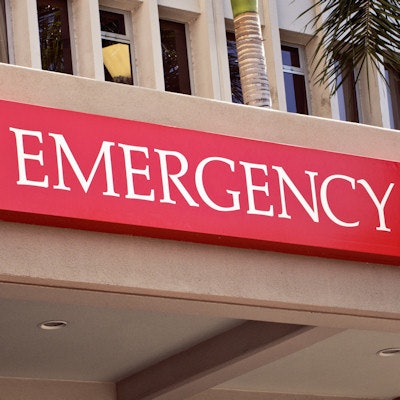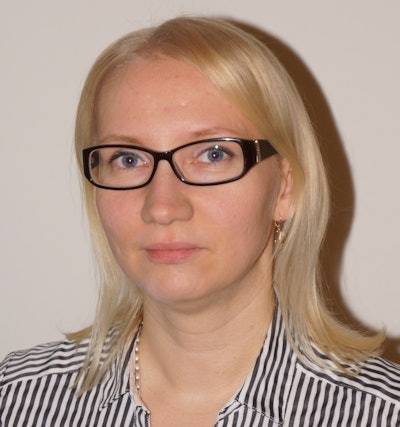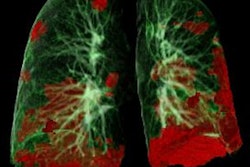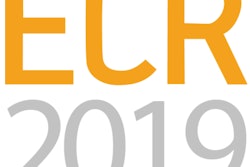
Radiation dose tracking software revealed that children who had CT scans in the emergency room (ER) of separate hospitals in Finland received considerably different radiation doses for head and cervical spine CT exams, according to a study published in Emergency Radiology.
The researchers examined radiation dose information extracted from more than 1,500 pediatric CT exams of the head and cervical spine at two hospitals in the same district. Radiation dose tracking software revealed that doses were, on average, 30.6% lower for head CT exams and 62% lower for cervical spine CT exams at one hospital than the other (Emerg Radiol, December 16, 2017).
Dose monitoring software was valuable in collecting, analyzing, and benchmarking the CT data of children and young adults, Hannele Niiniviita, PhD, from Turku University Hospital told AuntMinnie.com.
"Before, we collected doses by writing them down on paper for a maximum of 20 patients at a time," she said. "Now we can easily collect 10 times more, which makes the data much more reliable. Due to its laborious nature, we previously only collected doses for studies that already had diagnostic reference levels, but now [with dose tracking software] there are many more doses we can optimize for other types of studies as well."
Repeated quality assurance
 Hannele Niiniviita, PhD, from Turku University Hospital.
Hannele Niiniviita, PhD, from Turku University Hospital.As the use of pediatric CT continues to rise, so, too, do concerns about radiation safety for children. One method for optimizing radiation dose based on the as-low-as-reasonably-achievable (ALARA) principle is establishing diagnostic reference levels (DRLs), both nationally and locally.
Using DRLs for pediatric patients, however, is less than ideal due to marked variation in patient size and weight and relatively small population sizes for each age or size group, Niiniviita said. Many professional and regulatory organizations have endorsed the establishment of pediatric DRLs, but they are still not widely used.
"Thus, to fulfill the ALARA principle, there is a need for repeated quality assurance including the use of DRLs and large-scale dose analysis with respective CT scanners and indications for a specific patient group," the authors wrote.
Intending to promote the use of DRLs for pediatric patients, Niiniviita and colleagues collected information about CT radiation dose received by children in the emergency rooms of two different hospitals in the same district using radiation dose tracking software (DoseWatch, GE Healthcare). They culled CT radiation data from 615 trauma head CT, 319 routine head CT, and 592 trauma cervical spine CT exams of children taken over the course of a two-year period starting on June 1, 2014. They focused on head CT scans as the most common anatomic region and modality in pediatric imaging.
The scanners at hospital A (Somatom Definition Flash, Siemens Healthineers) and hospital B (Aquilion One, Toshiba Medical) automatically provided dose data -- including CT dose index volume (CTDIvol) and dose-length product (DLP) -- through radiation dose tracking software. The researchers categorized the information by patient age: 0 to 5 years, followed by 6 to 10, 11 to 15, and 16 to 20 years. They subsequently calculated effective dose from DLP via age-specific conversion factors.
Dose varies among hospitals
The mean CTDIvol of the CT scans from hospital B were all lower than the mean CTDIvol from hospital A to a statistically significant degree (p < 0.001): Trauma head CT scans were lower by an average of 12.7 mGy, routine head CT scans by 13.2 mGy, and trauma cervical spine CT scans by 11.4 mGy.
| Variation in ER CT radiation dose at 2 hospitals in Finland | ||
| Hospital A dose in CTDIvol | Hospital B dose in CTDIvol | |
| Trauma head CT | 53.3 mGy | 40.3 mGy |
| Routine head CT | 43.2 mGy | 30 mGy |
| Trauma cervical spine CT | 18.3 mGy | 6.9 mGy |
In addition to lower radiation dose, the length of average scanning time was shorter at hospital B than at hospital A to a statistically significant degree for all three categories of CT exam. For trauma head CT exams, doses increased with age (p < 0.001) at a similar rate at both hospitals. Doses for routine head CT and trauma cervical spine CT exams, however, increased more quickly with age in hospital A than hospital B.
What's more, trauma head CT doses were higher than routine head CT exams at both hospitals (p < 0.001) due to the radiologists' preference for higher image quality in trauma cases, according to the researchers.
One likely explanation for the variability in CT radiation dose is the application of iterative reconstruction to the CT scans at hospital B, the researchers noted. In this study, the effect of iterative reconstruction stood out when a shift in trauma head CT protocol parameters was implemented at hospital B halfway through the evaluation period. The iterative reconstruction setting was elevated from "standard" to "strong," which led to no less than a 35.5% drop in average CTDIvol.
Local diagnostic reference levels
Out of the three types of CT exams, only the 75th percentile CTDIvol values of trauma cervical spine CT exams taken at hospital B seemed suitable to serve as local DRLs. The 75th percentile values for head CT exams at both hospitals either exceeded national DRLs or did not include a large enough population size in the youngest age category.
"To our knowledge, there are no reported DRLs for trauma cervical spine CTs for pediatric patients," the authors wrote. "The 75th percentiles of trauma cervical spine in hospital B can be used as local DRLs."
Radiation dose tracking software can offer valuable information regarding pediatric CT exams that may help radiologists optimize protocols for children, who are generally more sensitive to the effects of radiation, Niiniviita said.
The researchers plan to continue using the software to optimize radiation dose not only for head CT but also for abdominal and whole-body CT as well.
"A project to optimize the pediatric CT protocols has been started," she said. "We noticed that we have quite a range of different protocol names, and before we can get a full benefit from the dose monitoring software tool, we need to update the nomenclature. Otherwise we cannot be sure that we are comparing apples to apples."



















